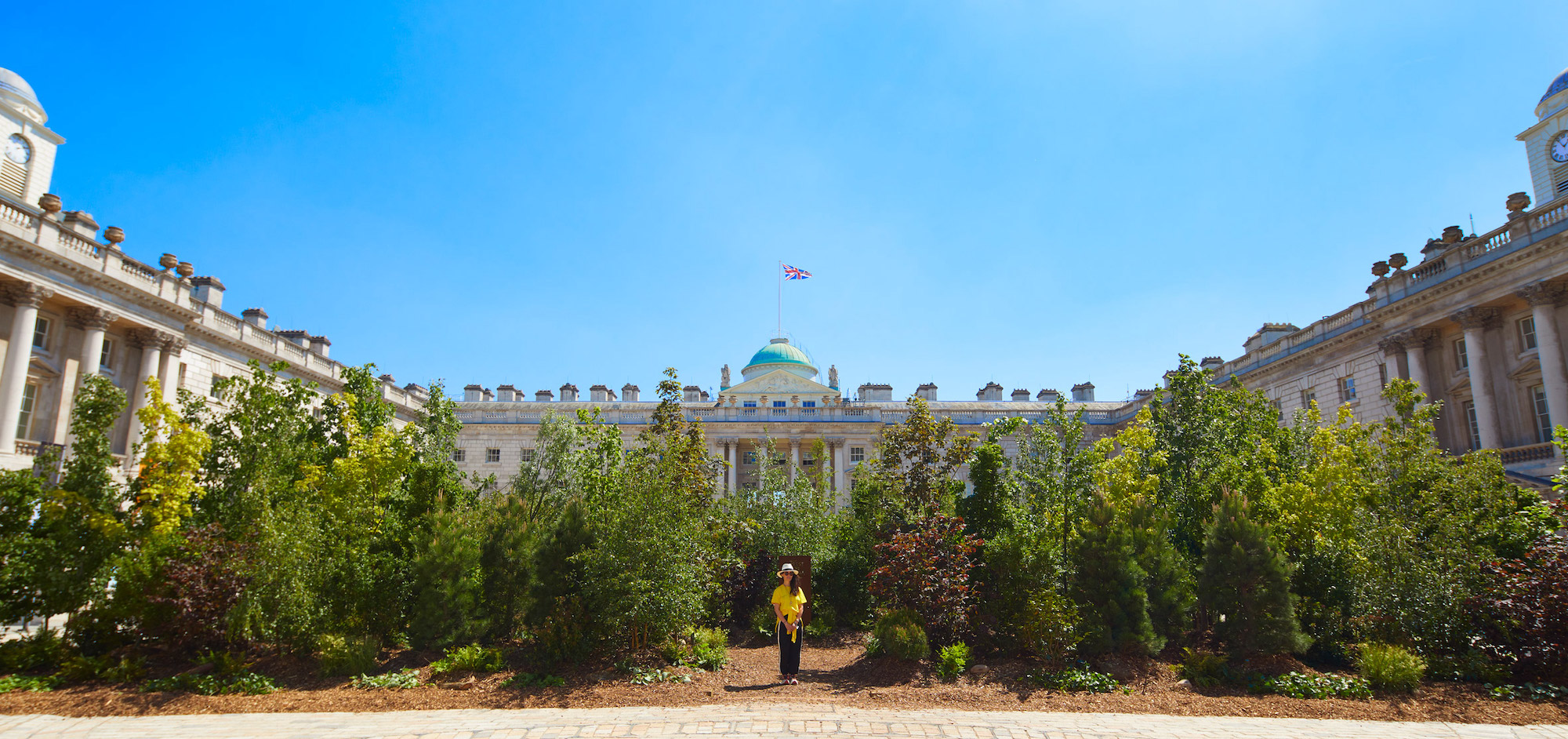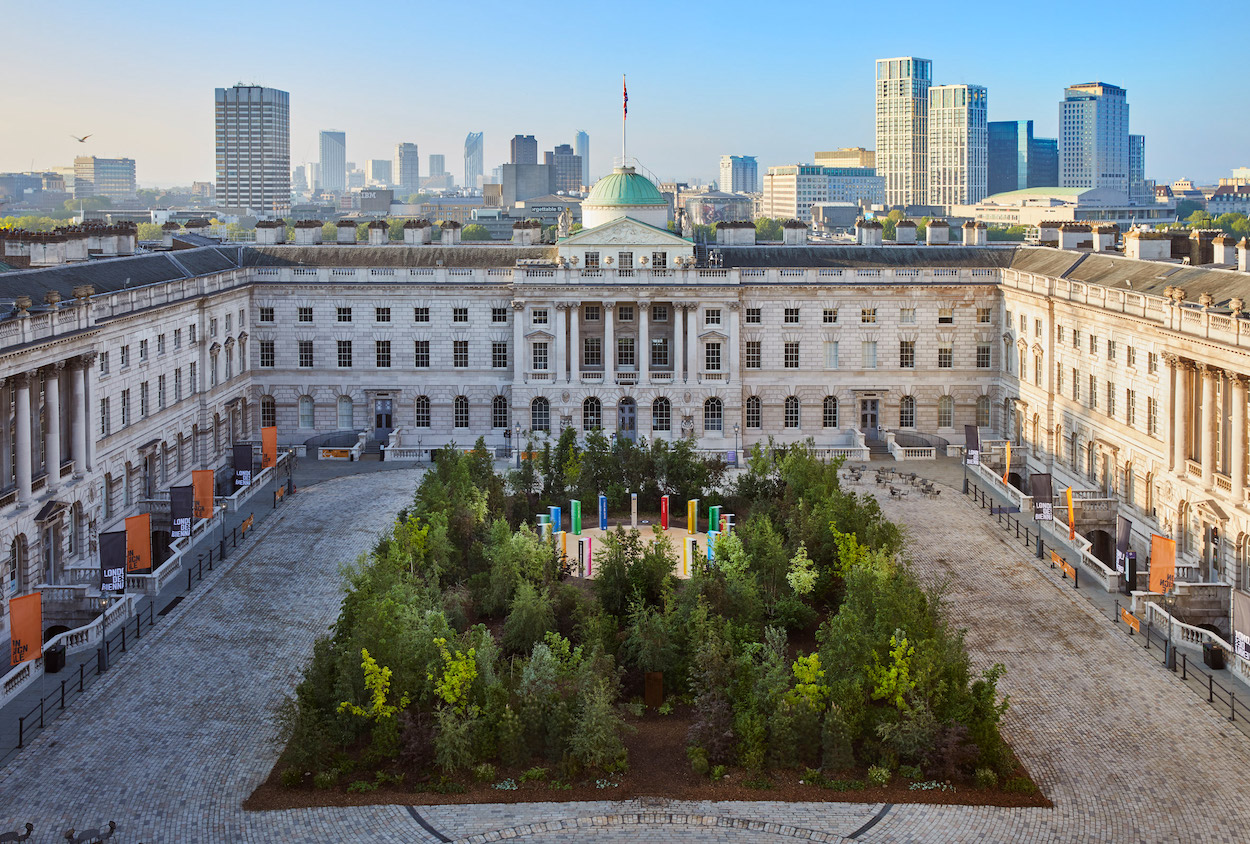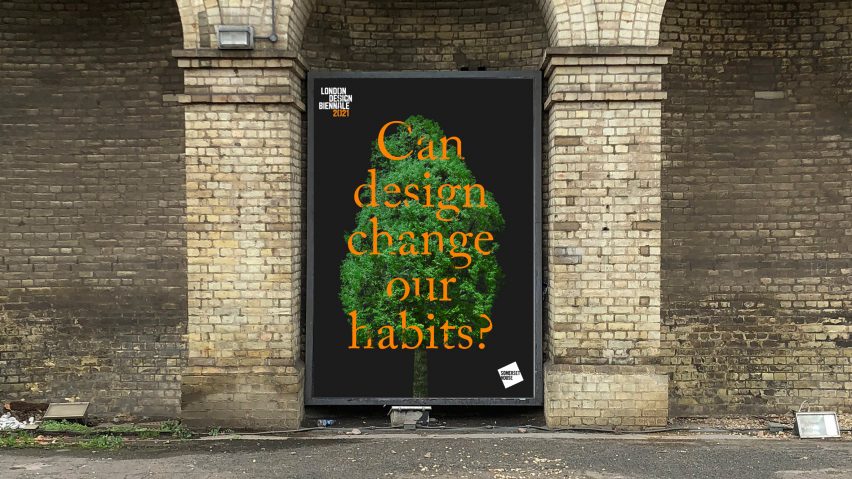When Es Devlin toured Somerset House two years ago after being named artistic director of the 2021 London Design Biennale, she was told that the only intervention she couldn’t make within its cobblestoned Georgian quadrangle was planting trees. “It’s been written into the building’s architectural covenant, based on the Palladian Enlightenment principles of the triumph of human design over nature, that you can’t put any living trees in this courtyard,” she notes, referencing the decree that the neoclassical landmark’s architect, William Chambers, issued in 1776. As an antidote to Rococo ornamentation, Enlightenment buildings adhered to mathematical precision, absolute functionality, and the measurable restraint of science—a far cry from the unpredictability of nature. “It was a natural instinct to rebel against that.”
So that’s exactly what the acclaimed stage designer did for this year’s edition, which becomes one of the first major design events to take place in London since the coronavirus pandemic ground in-person happenings to a halt this past March. “The idea here is resistance to Enlightenment edicts, and resistance to the idea of human domination over nature,” Devlin says, citing Richard Powers’ Pulitzer Prize–winning novel The Overstory—a generational saga about five trees whose life experiences with a group of Americans brings them together to address the destruction of forests—as a major influence. “In literature, forests are often places of transformation: the Forest of Arden in Shakespeare, the enchanted forests of the Brothers Grimm.”
Created in collaboration with landscape designer Philip Jaffa and urban greening specialist Scotscape and presented with the nonprofit Project Everyone, “Forest for Change” is both the Biennale’s centerpiece and a transformative site that aims to amplify the UN’s Sustainable Development Goals. As visitors wander through the 39,000-square-foot verdant grove, a biodiverse labyrinth that features 23 tree species native to the U.K. and northern Europe, they encounter a clearing marked by a circular arrangement of colorful mirrored plinths. Each column is inscribed with one of the 17 objectives—eliminating hunger, achieving gender equality, and implementing affordable and clean energy, for example—that carve out a plan to create a more sustainable post-pandemic world. “These goals are complex problems, but when you see them in those colors with those simple symbols, they feel less overwhelming,” Devlin says. “It’s my hope that when you get to the center, you’re able to approach these really complex global problems without feeling so daunted or overwhelmed.”
Social and environmental concerns have recently been top of mind for Devlin, who tasked the Biennale’s participants with creating installations that posit how design can offer solutions to the world’s most urgent challenges. Designers delivered on that concept: Ini Archibong, who masterminded the Pavilion of the African Diaspora, creates space to amplify Black voices and creativity; the Ghana pavilion’s designer, Chrissa Amuah, envisioned a balanced cultural interchange of ideas that could have happened between her home country and Great Britain instead of colonization and the slave trade. “In our global, digital era, design can instantly permeate borders and bridge cultures,” Devlin says. “As a community of designers approaching shared global challenges from culturally diverse viewpoints, the collective resonance of our ideas and our actions has the power to be truly transformative.”
And sometimes transformation comes in small doses. When the Biennale concludes, on June 27, each of the 423 trees in “Forest for Change” will be earmarked for reforestation throughout inner-London boroughs as part of local tree-planting initiatives. “Many of us in London have been visiting this particular courtyard for many years and have been discussing the idea of a rebellion against this particular [Enlightenment] stipulation over the past decade.” In that respect, “Forest for Change” feels like a breath of fresh air.
The London Design Biennale will display at Somerset House until June 27.



